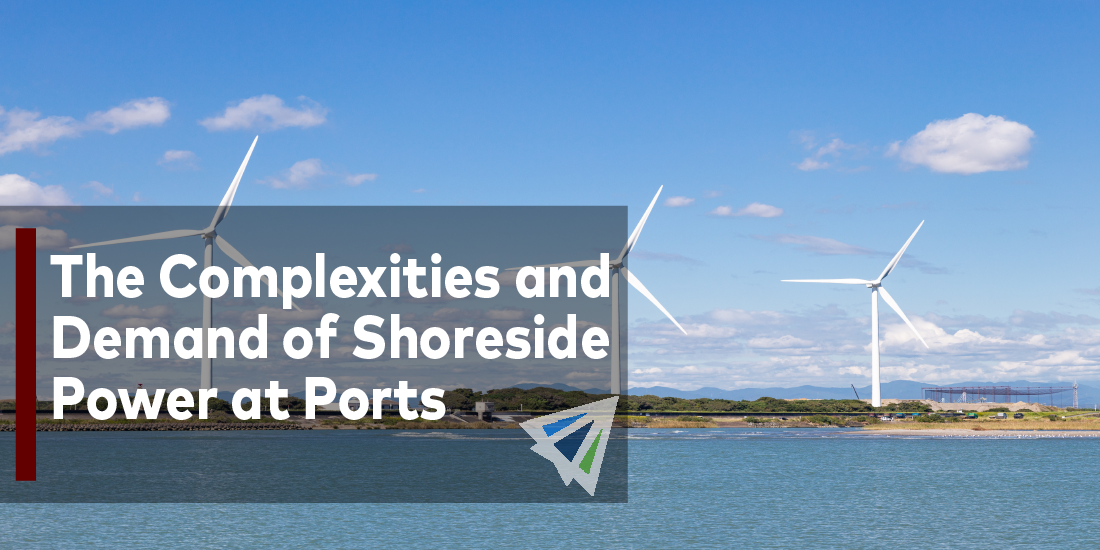The demand for shoreside power is increasing as the world’s ports develop. The need for creative solutions is driven by the fact that many ports lack the electrical infrastructure required to run conventional power systems.
A succession of global supply chain shocks have put the world’s ports system’s resiliency to the test. Although signs point to 2023 being a better year for supply chains, increasing resilience is still essential to ports’ success and the uninterrupted flow of goods. Two key components make up the plan for preserving the competitiveness and profitability of ports: guaranteeing reliable and intelligent operations while concurrently adhering to increasingly strict environmental standards.
Ports Struggle as Regulations Tighten
Ports are under more pressure to adopt greener alternatives as a result of regulatory developments. The shift of container, reefer, and cruise vessels to this new regulation has been prompted by the adoption of the California Air Resources Board’s new At Berth Regulation compliance requirements from January 1, 2023. As the European Commission pushes its plans to control the entry of highly polluting ships into EU ports and impose the use of shoreside energy for parked vessels, a parallel momentum is developing across Europe. These programs support the rising global movement to improve emissions regulation.
However, many ports continue to face significant challenges with the reliable supply of power. Numerous ports experience difficulties as a result of poor electrical connections or a weak power supply. For instance, ports located close to large cities with high electricity demands frequently experience power shortages, leading to regional blackouts. Furthermore, these challenges are made more difficult by the impact of climate change and bad weather. Blackouts are a common occurrence in ports that are situated in hurricane-prone areas, such as the Gulf Coast. Power sources that are adaptable and reliable must be used to address this issue.
Ocean Ports Face Approaching Deadlines
The challenge facing ports is striking a balance between dependability and competitiveness, especially when it comes to the handling of certain commodities. Seaborne refrigerated cargo is predicted to increase at a 3.7% annual pace over the next three years, which is twice as fast as dry bulk. However, a steady supply of electricity for chilled shipments is necessary for the cold chain to function.
While ships’ auxiliary engines have traditionally provided this power, interest in shoreside power has increased as a result of the growing desire for environmentally friendly alternatives. Notably, emissions from ships’ fossil fuel-powered auxiliary engines during dock periods are greatly reduced by shoreside power generated from sustainable and green sources. The potential of such strategies is demonstrated by exemplary projects like the collaboration between the Los Angeles port and CARB.
In the face of new rules, pressure on European ports to keep consumers is growing. Concerns have been expressed that the scope of EU ETS and FuelEU may undermine the competitiveness of the terminals in the area, forcing shipping firms to divert cargoes to non-EU ports in order to save money. In this situation, it becomes vital to be able to assist clients in meeting environmental regulations while retaining profitability. For EU ports, low-emission shoreside power is emerging as a defensive tactic.
Despite the obvious advantages, the European Sea Ports Organization (ESPO) has noted that there are substantial obstacles to the implementation of shore power. These difficulties include the expense of setting up onshore power supply, the lack of a strong economic case, and the grid’s constrained ability to handle several simultaneous vessel connections.
The process of joining and disconnecting operations between different ship segments necessitates certain procedures that call for additional employees and trained workers. Long-term planning and investment are made more difficult by the fact that each ship type’s shore power infrastructure is unique.
The work of e1 Marine, which is creating a portable methanol-to-hydrogen generator, offers a viable remedy. The process of introducing fresh solutions to maritime applications is complex and frequently involves adjustments and lessons learned. Integration of components with different levels of maturity presents difficulties, and the lack of a common standard for integrating new technology into facilities makes things even more difficult. The complexity of the parties involved makes it more difficult to adapt the design of the containerized unit to local markets and laws.
Conclusion
Collaboration amongst many stakeholders is ultimately key to the development and application of clean, renewable energy sources for green shoreside electricity. To bring about change, developers, port authorities, operators, local governing bodies, and end users must collaborate. Although there is resistance to implementing new ideas, ports that do not improve their resilience and sustainability run the danger of losing business that may be difficult to recoup. The need for constant innovation and adaptation in the field of port operations is highlighted by the changing environment.
